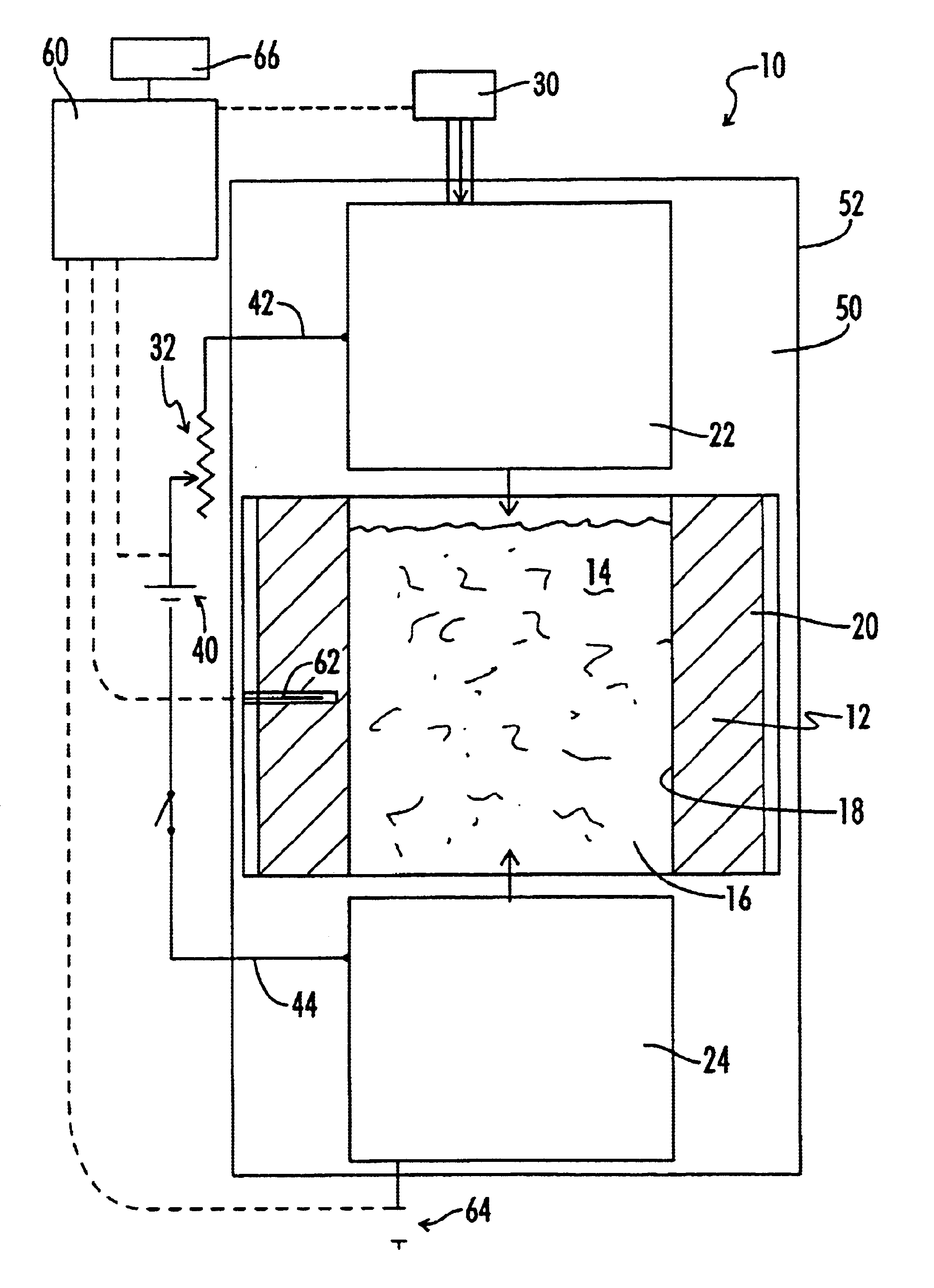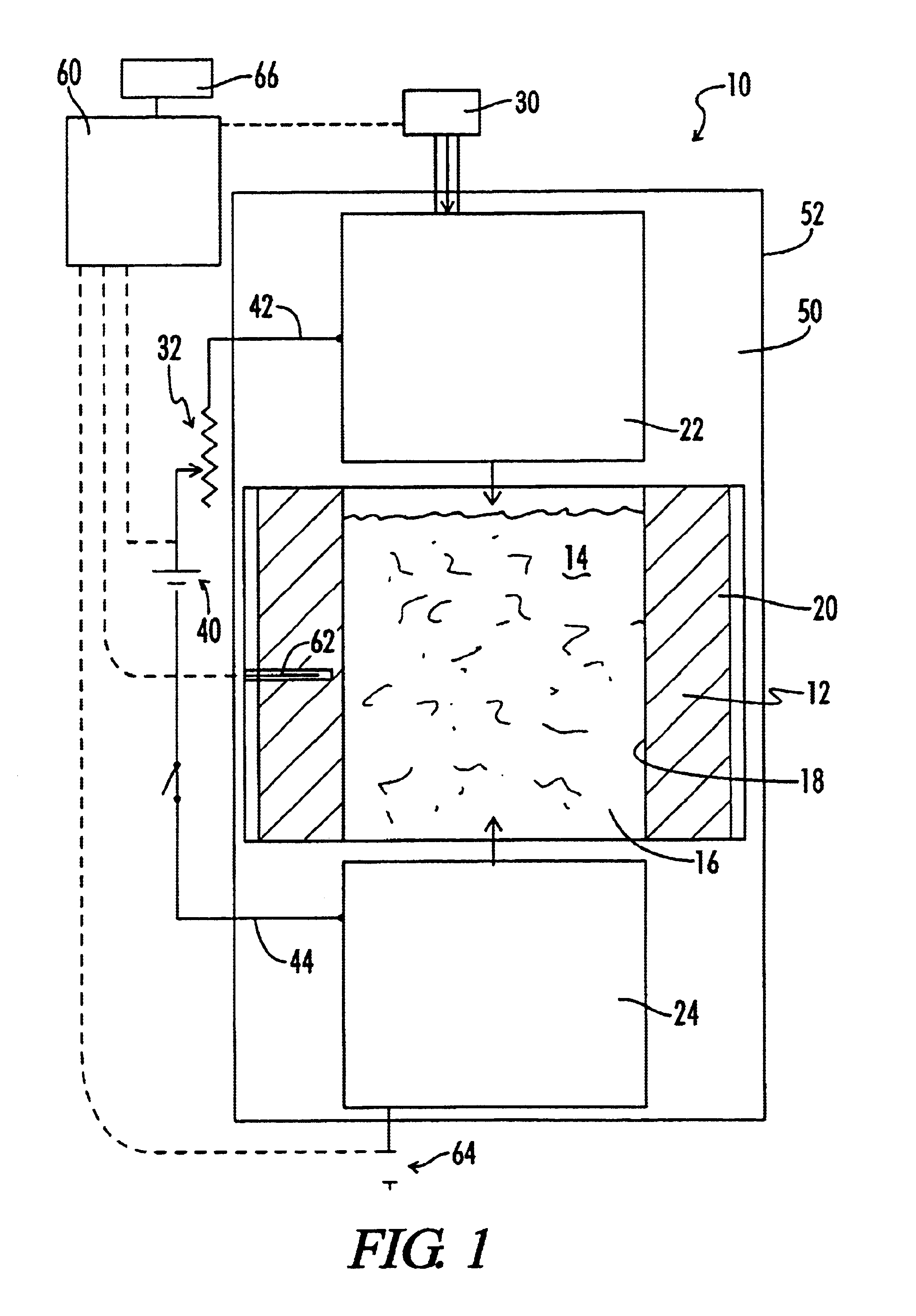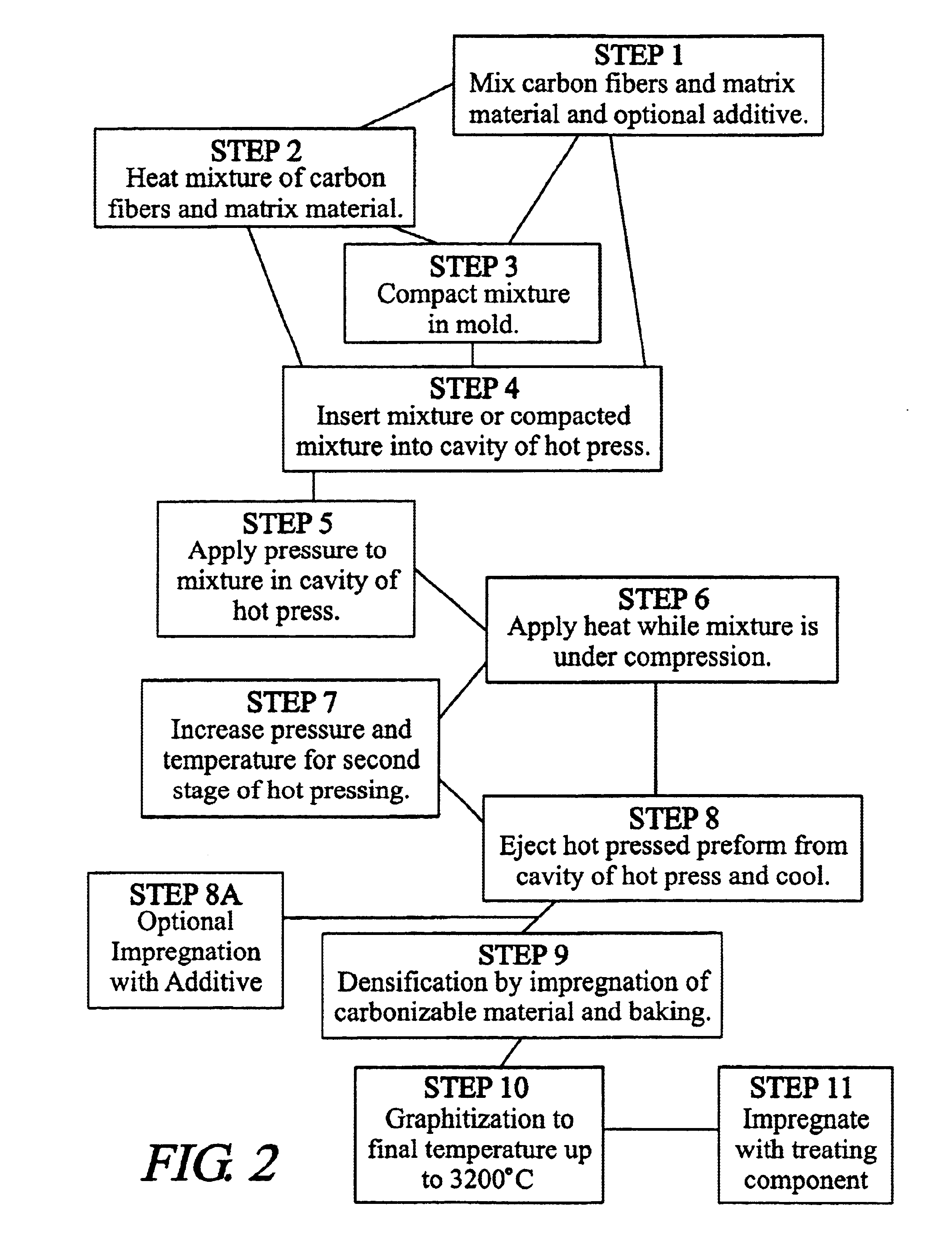Manufacture of carbon composites by hot pressing
a carbon composite and hot pressing technology, applied in friction lining, electric/magnetic/electromagnetic heating, transportation and packaging, etc., can solve the problems of increasing weight, and increasing the cost of composites. , to achieve the effect of improving oxidation stability, improving machinability, and high friction coefficien
- Summary
- Abstract
- Description
- Claims
- Application Information
AI Technical Summary
Benefits of technology
Problems solved by technology
Method used
Image
Examples
example 1
Carbon / Carbon Composite Made by Dry Mixing of Precursor Materials
Mesophase pitch-based carbon fibers and a matrix material of milled pitch with 170° C. Mettler softening point (“SP”) (ASTM D 3104) and 70% coking yield were dry mixed at ambient temperature in a Sigma-type blender or similar type of mixer for about 5-15 minutes. The ratio of fibers to pitch matrix material was from 50-80 wt % fiber: 20-50 wt % pitch. The mixture was collected and charged into a mold box cavity (dimensions approximately 23×20 cm) of a hot press, as illustrated in FIG. 1. A pressure of up to about 140 kg / cm2 was applied to the mixture in the press. After pressing to compact the mixture, an electric current of about 1000-2000 amps (a power input of about 30-60 kW / kg) was passed through the mixture. The mix was held under the temperature and pressure conditions for about 5-10 minutes. The temperature of the mixture reached 800-900° C. This hot pressing process carbonizes and densifies the fiber / matrix mix...
example 2
Carbon / Carbon Composite Made by Hot Mixing of Precursor Materials
Various batches of mesophase pitch-based carbon fibers and a matrix material of milled pitch from Example 1 were hot mixed at a temperature of about 200° C. in a Sigma-type blender or similar type of mixer for about 30-45 minutes. The ratio of fibers to pitch matrix material was varied from about 50-80 wt % fiber: 20-50 wt % pitch. During the hot mixing, the matrix material coated the fibers uniformly. The mixture was collected and charged into a mold box cavity of a hot press, and heated and pressed as described for Example 1. Alternatively,.the mixture was compacted in a separate mold to a density of between about 0.5 and 1.0 g / cm3 prior to hot pressing.
A pressure of up to 140 kg / cm2 was applied to the mixture in the hot press. After pressing to compact the mixture, an electric current as high as 1500-2000 A (a power input of about 45-60 kW / kg) was passed through the mixture. The mix was held under the temperature an...
example 3
Silicon Carbide Carbon / Carbon Composite Made by Hot Mixing of Precursor Materials
Direct Addition of Solid SiC.
Blends of silicon carbide powder with an average particle size of about 10-20 microns from Alfa Aesar Company were blended with mixtures of chopped mesophase pitch carbon fiber and a 170° C. SP coal tar pitch by stirring at about 220° C. The mesophase pitch carbon fibers were about ¼-inch long obtained from Mitsubishi Chemical Corp. The following blend compositions were prepared, as shown in TABLE 3-1:
TABLE 3-11234Carbon fiber 77% 69% 69%62.5%Matrix19.2%27.6%17.2% 25%SiC 3.8% 3.4%13.8%12.5%
The blends were hot pressed to produce carbonized 3 cm thick carbonized composites with dimensions of 23 cm×23 cm. The densities measured for the as-pressed composites were: (1)=1.52, (2)=1.53, (3)=1.55, and (4)=1.55 g / cc. The composites were impregnated with petroleum pitch and then rebaked to 900° C. and the impregnation and rebake steps were repeated . After the 2 impregnation / rebak...
PUM
| Property | Measurement | Unit |
|---|---|---|
| density | aaaaa | aaaaa |
| density | aaaaa | aaaaa |
| temperatures | aaaaa | aaaaa |
Abstract
Description
Claims
Application Information
 Login to View More
Login to View More - R&D
- Intellectual Property
- Life Sciences
- Materials
- Tech Scout
- Unparalleled Data Quality
- Higher Quality Content
- 60% Fewer Hallucinations
Browse by: Latest US Patents, China's latest patents, Technical Efficacy Thesaurus, Application Domain, Technology Topic, Popular Technical Reports.
© 2025 PatSnap. All rights reserved.Legal|Privacy policy|Modern Slavery Act Transparency Statement|Sitemap|About US| Contact US: help@patsnap.com



